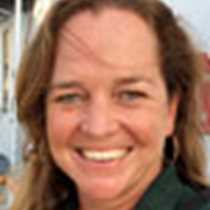Floreana Island
After having spent several days exploring the central and western islands of the Galápagos Archipelago, we re-positioned over night to the south, to visit the famous island of Floreana. This was the very first island to be inhabited, in 1809, by a shipwrecked Irishman named Patrick Watkins. The presence of fresh water in the highlands made it particularly attractive to ships passing by, and it became a major stopping point for pirates, buccaneers and later whalers and fur sealers – a fact that led to the extinction of the giant tortoise of Floreana. It was later a thriving penal colony, that when Darwin visited in 1835 had a total of almost 300 people in it! In the early 20th century, it became home to a variety of eccentric Europeans looking for a new life, a failed aspiration that led to the death of many of them, in what has been dubbed “the curse of the giant tortoise”!
The present reality of the island is totally different, though, now that most visitors travel the islands in luxury and the inhabitants of the mainland of Ecuador are anxious to move here, the standard of life being significantly higher out here!In addition to a rich human history, however, Floreana has a fascinating ecosystem composed of many unique plant species and some of the best snorkelling in the entire archipelago, around the cactus-covered neighbouring islet of Champion. Fish and sea lion lovers were not the only ones in paradise, however: bird-lovers were in for a treat too, with red-billed tropic birds and the endemic and highly endangered Floreana mocking bird abounding at Champion and a spectacular display of flamingos to be had on the main island.
We have by now come to the conclusion that each part of the Galápagos Archipelago is special and unique in its own way, and we have fully enjoyed it all!
After having spent several days exploring the central and western islands of the Galápagos Archipelago, we re-positioned over night to the south, to visit the famous island of Floreana. This was the very first island to be inhabited, in 1809, by a shipwrecked Irishman named Patrick Watkins. The presence of fresh water in the highlands made it particularly attractive to ships passing by, and it became a major stopping point for pirates, buccaneers and later whalers and fur sealers – a fact that led to the extinction of the giant tortoise of Floreana. It was later a thriving penal colony, that when Darwin visited in 1835 had a total of almost 300 people in it! In the early 20th century, it became home to a variety of eccentric Europeans looking for a new life, a failed aspiration that led to the death of many of them, in what has been dubbed “the curse of the giant tortoise”!
The present reality of the island is totally different, though, now that most visitors travel the islands in luxury and the inhabitants of the mainland of Ecuador are anxious to move here, the standard of life being significantly higher out here!In addition to a rich human history, however, Floreana has a fascinating ecosystem composed of many unique plant species and some of the best snorkelling in the entire archipelago, around the cactus-covered neighbouring islet of Champion. Fish and sea lion lovers were not the only ones in paradise, however: bird-lovers were in for a treat too, with red-billed tropic birds and the endemic and highly endangered Floreana mocking bird abounding at Champion and a spectacular display of flamingos to be had on the main island.
We have by now come to the conclusion that each part of the Galápagos Archipelago is special and unique in its own way, and we have fully enjoyed it all!




